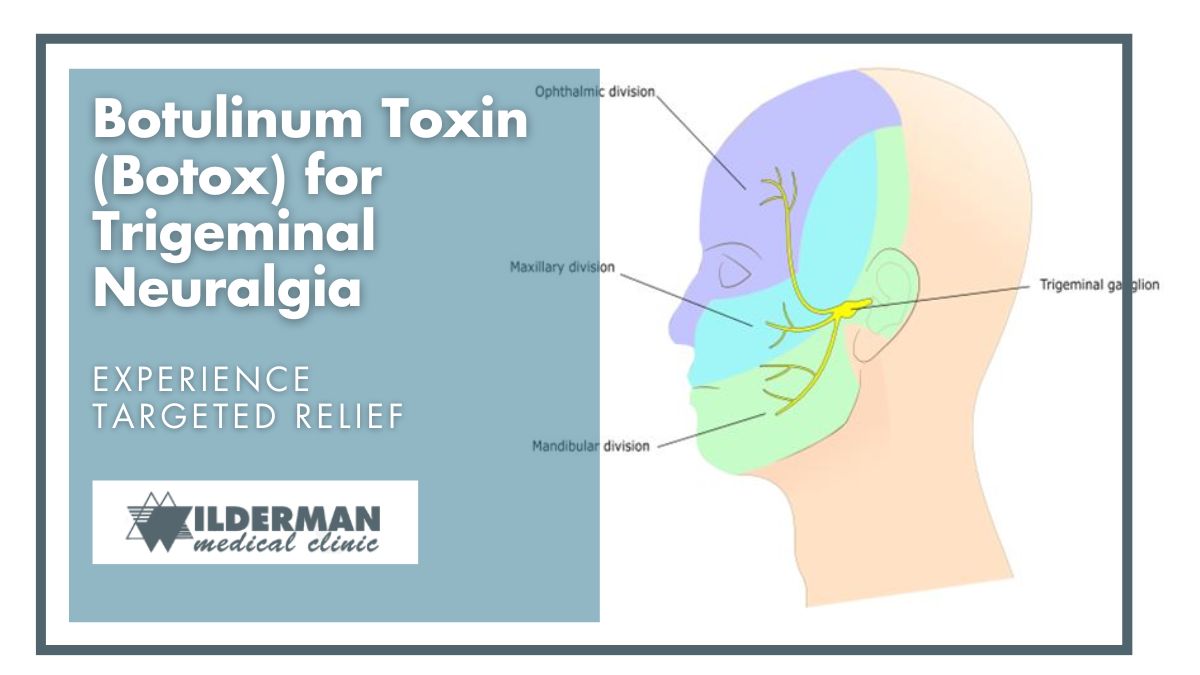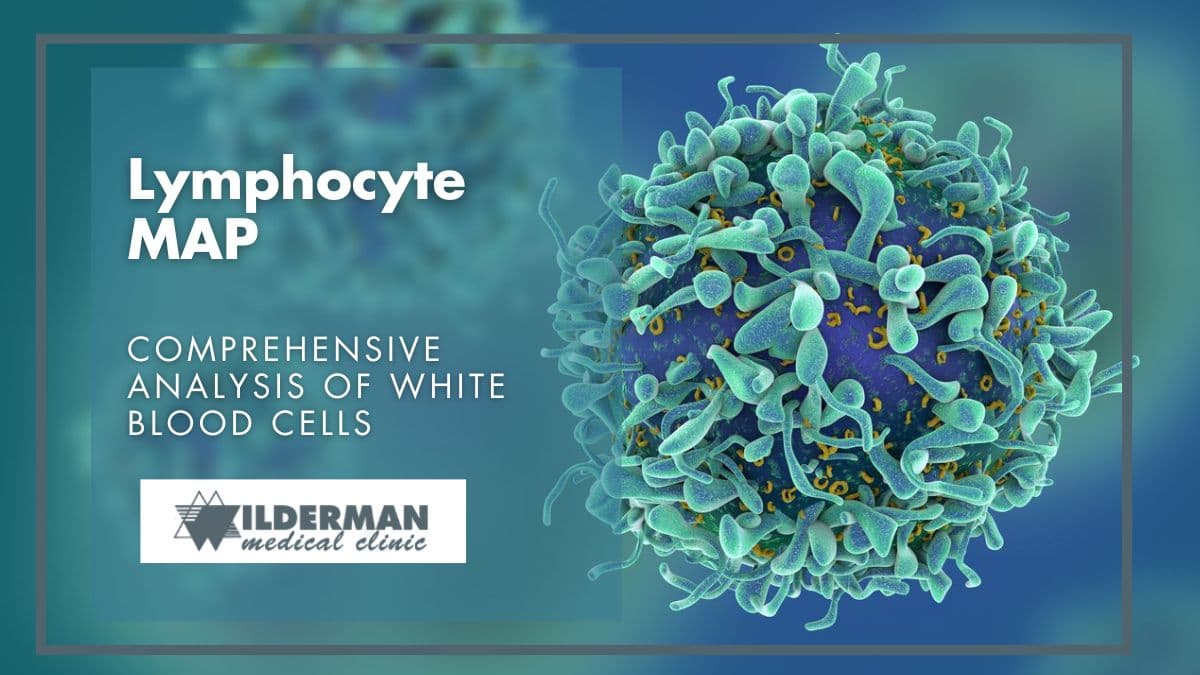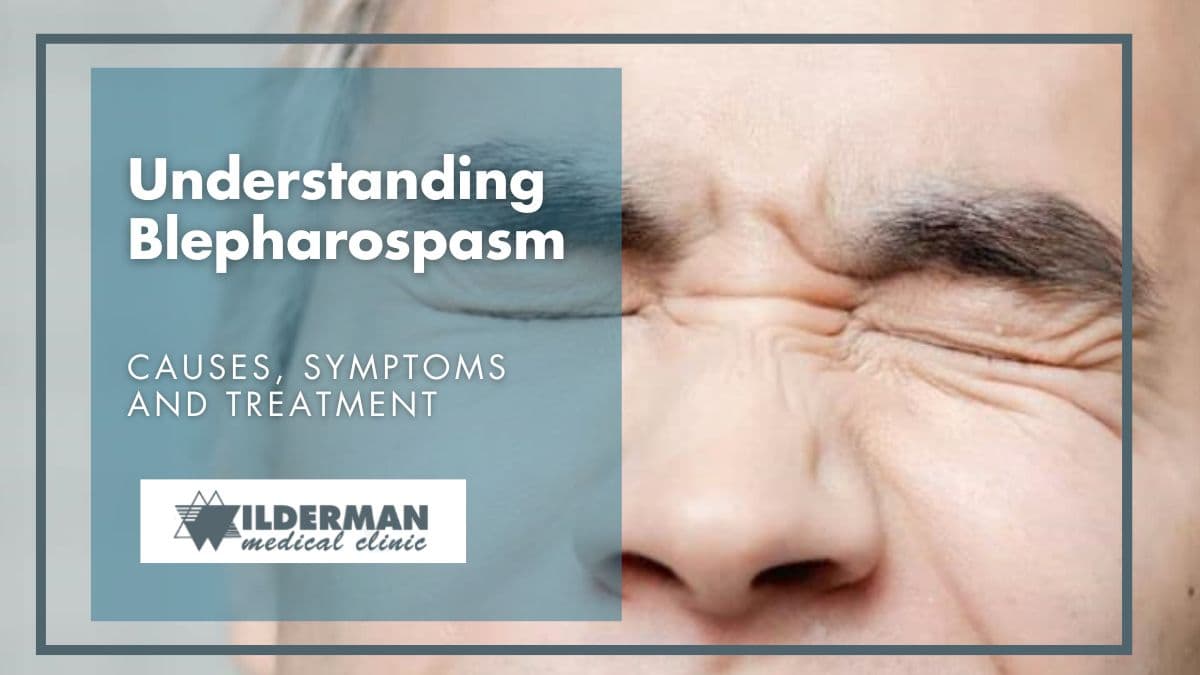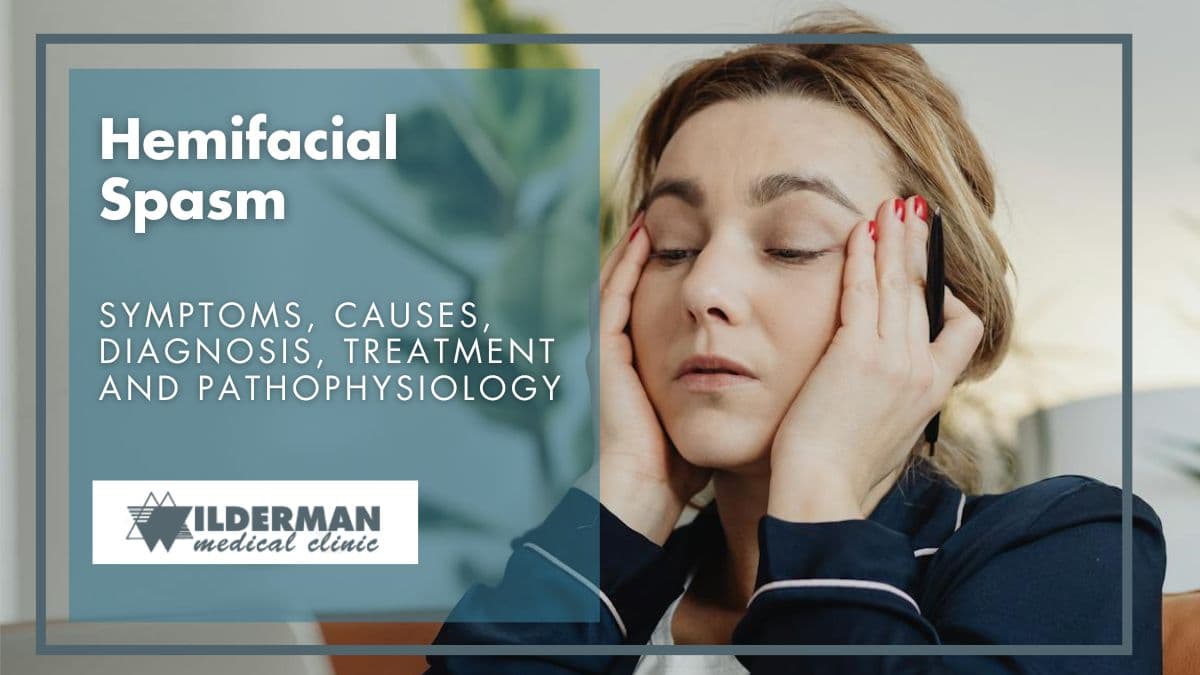Botulinum Toxin (Botox) for Trigeminal Neuralgia

What is Trigeminal Neuralgia?
Trigeminal neuralgia (TN), also known as tic douleureux, is a disorder where the trigeminal nerve is hypersensitive and easily activated (Lambru et al., 2021).
This hypersensitivity is caused by the compression of the nerve at the base of the brain, which can be caused by a variety of things, including multiple sclerosis, a brain lesion, a displaced blood vessel, or other neurological disorders that affect the nerves.
TN is characterized by short episodes of intense, often debilitating, one-sided pain within the area(s) of the trigeminal nerve. This pain lasts between a few seconds to a few minutes at a time, rarely more than two minutes, and is limited to a specific area.
The pain is described as an electric shock, shooting, or sharp pain, and comes in episodes with a symptom-free period in between lasting up to several months or years at a time.
This disorder affects the right side more often than the left side, though it is possible for TN episodes to alternate sides in some rare cases. An episode can be triggered by a very light stimulus of the trigeminal nerve, often as part of daily motions such as eating or talking.
Some people will have spontaneous episodes without a trigger, with an episode having an average of 10 daily pain attacks. However, there is no defined minimum or maximum number of attacks used in the diagnosis of TN.
What is Botox?
Botulinum toxin injection (BTI), commonly referred to as Botox or Xeomin, is a treatment that relaxes muscles and reduces pain-related neurochemical signals (Luvisetto et al., 2015).
The injections contain a purified and safe strain of Clostridium botulinum, the bacteria responsible for botulism food poisoning. The bacterial toxins act on the muscle receptors and prevent the neurotransmitter acetylcholine from binding to its nerve receptors.
As acetylcholine is responsible for initiating a muscle contraction, blocking its effect on the muscle helps relax it by causing temporary mild muscle paralysis. Furthermore, acetylcholine helps transmit pain signals through the nerves. By temporarily blocking its receptors, BTI reduces the ability of acetylcholine to do so.
How does botulinum toxin work?
Botulinum toxin injections (Botox and Xeomin)introduce a safe and purified strain of Clostridium botulinum into the body through an injection or a series of injections. The bacteria create a substance that acts on the muscle receptors and prevents the neurotransmitter acetylcholine from binding to its receptors.
By blocking the binding of acetylcholine to muscle receptors, it prevents those muscles from contracting, forcing them into a state of temporary paralysis. This allows strained muscles to rest and recover from any injuries that may be causing pain.
Furthermore, by blocking acetylcholine from attaching to its nerve receptors, the nerve’s ability to transmit pain signals to the brain is interrupted. This leads to a temporary reduction in overall pain levels, as the brain doesn’t receive those signals.
Application of botulinum toxin injections for Trigeminal Neuralgia
When it comes to TN episodes, botulinum toxin injections, or BTI, function by blocking acetylcholine’s ability to transmit pain signals through the trigeminal nerve. This reduces the pain and frequency of attacks present within a TN episode.
Due to the small amount of current research available on the use of BTI for TN, this therapy is not suggested as a first treatment option. The current recommendation is that BTI be used as a secondary treatment option if TN fails to respond sufficiently to other non-surgical treatment options.
Treatment Expectations
The use of BTI for TN is still being researched; however, the initial findings for this treatment option have been promising. Patients with TN who received BTI showed significant improvement in the severity and frequency of TN episodes after a week, with this reduction increasing over time.
The reviews of research results showed that an average of 80% of patients who received BTI for TN found significant pain and attack frequency reductions within a week of treatment.
On average, there was a minimum of a 50% reduction in pain and a 30% reduction in attack frequencies in the patients involved in the studies. (Morra et al., 2016; Kayani et al., 2022)Furthermore, these studies also noted a reduction in TN episodes during the studies. However, the specific changes in the frequency of TN episodes were not always gathered during the research process.
This makes it impossible to properly ascertain if this episodic reduction was significant.
In Börü et al. (2017), 88% of participants showed significant improvement in their pain and frequency relating to TN episodes. This pain reduction was an average of 75%, with an average 25% decrease in attacks within a single episode at the end of the six-month period.
However, some patients required a second treatment before reporting any changes in their pain and/or frequency.
Overall, BTI appears to be a promising treatment option for patients who don’t respond to other medical treatments. In most cases, BTI showed rapid results, within a week of treatment; however, some individuals required additional BTI treatments before any results were seen.
The current guidelines for any BTI is a single treatment every three to four months, though this may be altered by your medical team to meet your individual needs, up to a maximum of four treatments per year (Luvisetto et al., 2015).
Side Effects
Like with any medical treatment, BTIs carry some risk of side effects (Morra et al., 2016).
The following side effects are benign and typically disappear within a few days after the treatment:
- Fatigue
- Flu-like symptoms
- Nausea/vomiting
- Mild headaches
- Discomfort/bleeding/bruising at the injection site
The following side effects can take up to 2 weeks to disappear:
- Drooping eyelids
- Excessive salivation
- Mild facial paralysis
Some more serious side effects that may require medical assistance include dry eyes or an infection.
These rarer side effects are more severe and require immediate medical attention:
- Difficulties breathing/swallowing/speaking
- Sudden generalized muscle weakness
- Sudden visual distortions/changes
- Sudden bladder control issues
If you experience any of the above side effects after a BTI, please contact an ambulance (911 in North America) or have someone bring you to the nearest medical emergency center.
Contraindications
Some individuals should not receive BTI, including:
- Individuals planning a pregnancy or who are pregnant
- Breastfeeding individuals
- Individuals with a neuromuscular disorder such as Amyotrophic Lateral Sclerosis (ALS) or Myasthenia Gravis
- Individuals with a previous allergic reaction to BTI injections
What we do at WMC
The Wilderman Medical Clinic offers botulinum toxin injections as a treatment option for trigeminal neuralgia. A consultation with a qualified medical professional is required to determine if BTI is a viable treatment option for your specific situation.
Please note that OHIP covers botulinum toxin injections only in certain situations. Certain private insurance companies may also cover the cost of the medication under their guidelines. The injection fee is usually not covered.
Works Cited
Börü, Ü. T., Duman, A., Bölük, C., Duman, S. C., & Taşdemir, M. (2017). Botulinum toxin in the treatment
of trigeminal neuralgia. Medicine, 96(39), e8133. https://doi.org/10.1097/md.0000000000008133
Kayani, A. M. A., Silva, M. S., Jayasinghe, M., Singhal, M., Karnakoti, S., Jain, S., & Jena, R. (2022).
Therapeutic efficacy of botulinum toxin in trigeminal neuralgia. Cureus.
https://doi.org/10.7759/cureus.26856
Lambru, G., Zakrzewska, J. M., & Matharu, M. (2021). Trigeminal neuralgia: a practical guide. Practical
Neurology, 21(5), 392–402. https://doi.org/10.1136/practneurol-2020-002782
Luvisetto, S., Gazerani, P., Cianchetti, C., & Pavone, F. (2015). Botulinum Toxin Type A as a Therapeutic
Agent against Headache and Related Disorders. Toxins, 7(9), 3818–3844.
https://doi.org/10.3390/toxins7093818
Morra, M. E., Elgebaly, A., Elmaraezy, A., Khalil, A. M., Altibi, A., Vu, T. L. H., Mostafa, M. R., Huy, N. T., &
Hirayama, K. (2016). Therapeutic efficacy and safety of Botulinum Toxin A Therapy in Trigeminal
Neuralgia: a systematic review and meta-analysis of randomized controlled trials. Journal of Headache
and Pain, 17(1). https://doi.org/10.1186/s10194-016-0651-8
Need to get in touch?
Address: 8054 Yonge Street Thornhill, Ontario L4J 1W3
Phone: (905) 886 1212
Latest articles
April 27, 2024
April 27, 2024
April 27, 2024
April 27, 2024
April 27, 2024






